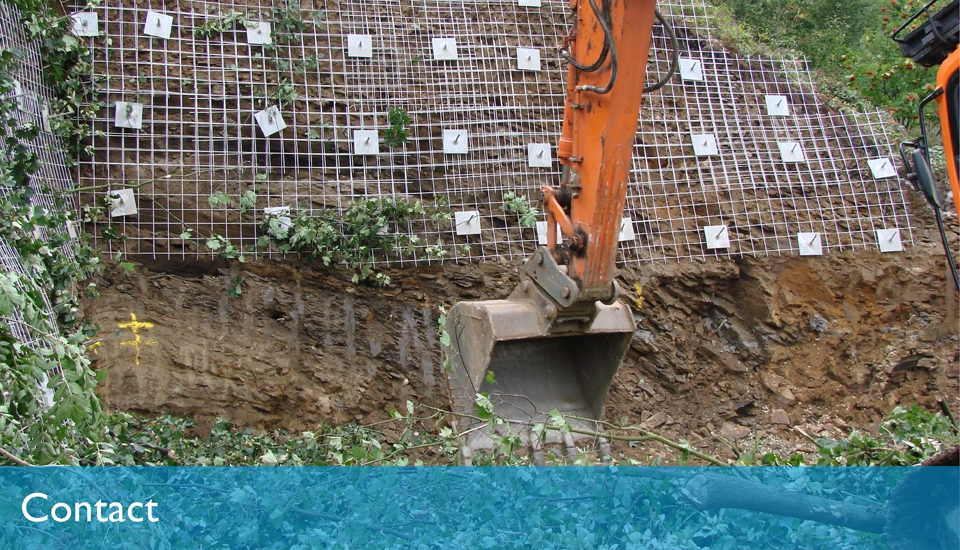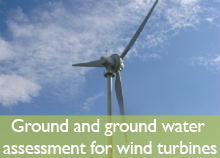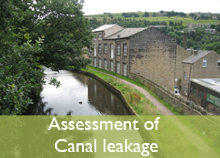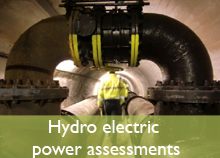Hydrogeology and Hydrology
Our knowledge of hydrogeology has enabled us to resolve our customers problems caused
by excessive or insufficient water.
Projects have included:
- Reconnaissance and design of wells.
- Design and commissioning of spring water collection systems.
- Drilling and licensing of boreholes and wells.
- Draining golf courses and sports fields.
- Supplying well water to golf courses.
- Draining ground by dewatering for development.
- Relieving water pressure behind walls and embankments.
- Assessing wind turbine developments.
Our customers include farmers, developers, golf clubs, schools, industry and landowners.
Wells
Ashton Bennett undertake Water Features Surveys to gain a Permit from the Environment Agency to investigate for water, and design and drill the required borehole and ancillary works to provide water for private water supply or industrial use. This includes installation of a submersible pump, undertaking a pump test to confirm sustainability of the required supply and testing the quality of the water and includes obtaining an abstraction licence from the Environment Agency.
Water Pollution
It is an offence to pollute controlled waters including surface water and ground water contained in aquifers. During any development or redevelopment of land it is essential to establish the risk of contamination detrimentally affecting aquifers and surface water. Ashton Bennett investigates potential and actual risk and reduces or manages the risk for clients.
Pollution can be caused by a single incident, an established working practice, or historic use of a site. Our extensive experience enables us to identify the source and design the most expedient method to mitigate the pollution. Ashton Bennett use the Environment Agency recognised P60 software to assess potential pollution to controlled waters from site specific contamination.
Groundwater Control
Accurate assessment of groundwater levels and hydrostatic pressure is essential to ensure reliable geotechnical design. Groundwater investigation includes monitoring of water levels and flow, assessment and prevention of pollution and includes design of any necessary dewatering for groundwater control and pollution control.
Wind Turbines
The construction, use and decommissioning of wind turbines can cause disruption to local hydrology and hydrogeology and Ashton Bennett undertake the required investigations and field reconnaissance to determine solutions to any concerns that arise during the investigations
Hydroelectric Power
Ashton Bennett undertake assessment of watercourses and reservoir spillways for the production of hydro electricity. Work includes desk studies, site assessment, ground investigation and calculations.
Assessment To Enable Ground Source Heating
Increasingly ground source heat is becoming the preferred method of heating homes and offices as it reduces carbon emissions and provides a reliable, economic heat at greatly reduced cost compared to gas/oil/electricity. Ashton Bennett undertake a preliminary hydrogeological survey to design the most suitable method of collecting the heat from the ground and design and undertake drilling to install open loop systems of heat recovery. Ashton Bennett work with sister company Earthtest Energy to install and commission the entire system of ground source heating.
Flood Risk Assessment (FRA)
Flood risk assessment for development in flood risk areas, and for basement impact assessments for planning submission for basement construction.
Fire Water Risk Assessment (FWRA)
Use of fire water in a building storing hazardous materials can cause pollution to controlled waters. Ashton Bennett assess the risks and design mitigating measures to prevent pollution occurring to controlled waters during a fire.
Fire Water Risk Assessments
Industrial and commercial sites have the potential to cause significant environmental harm and to threaten water supplies and public health by spillages of chemicals, oil and by fire water during and after a fire. The purpose of a Fire Water Risk Assessment (FWRA) is to assess the arrangements in place on the site to deal with water used to fight fire and to assess any detrimental impacts, taking into account the liquids and materials stored on site and the effect of fire water on the environment, controlled waters and land. The FWRA is an assessment of the risk that an industrial facility poses to the environment during a fire that brings firewater into contact with operations or substances that could cause significant pollution.
In order to assess this risk adequately our reports determine:
- The source of releases of dangerous substances in the event of a fire and the potential consequences
- The properties of the substances present on site and their potential for adverse reaction
- The environmental behaviour of the substances and potential to bioaccumulate in the food chain
- Information about the location, inventory and process conditions, with reference to bunding, entry points to storm and foul water drains, protective equipment and routes of water flows
- Information about the type and vulnerability of relevant water sources including river catchments, canals, aquifers, potable water supplies, local boreholes, springs, watercourses and other surface water.
- Information about the type and vulnerability of land such as Sites of Special Scientific Interest (SSSI)
Our methodology follows the Risk Assessment Method recommended by Contaminated Land Environmental Assessment or CLEA and defined in CLR documentation of the source-pathway-receptor. The risk is defined by the nature of the source, the pathways to possible sensitive receptors to the source which could be detrimentally affected. A site requires a Fire Water Risk Assessment (FWRA) if it stores dangerous substances classified under the Risk Phase R50 which is very toxic to aquatic organisms in excess of 1 tonne and / or R51 which is toxic to aquatic organisms in excess of 10 tonnes and / or R52 which is harmful to aquatic organisms in excess of 100 tonnes and / or R53 which may cause long term adverse effects in the aquatic environment in excess of 1000 tonnes. In addition various industrial premises require a FWRA. Our FWRA designs mitigating measures to retain firewater in order to prevent contamination of land and pollution of controlled waters by firewater.











